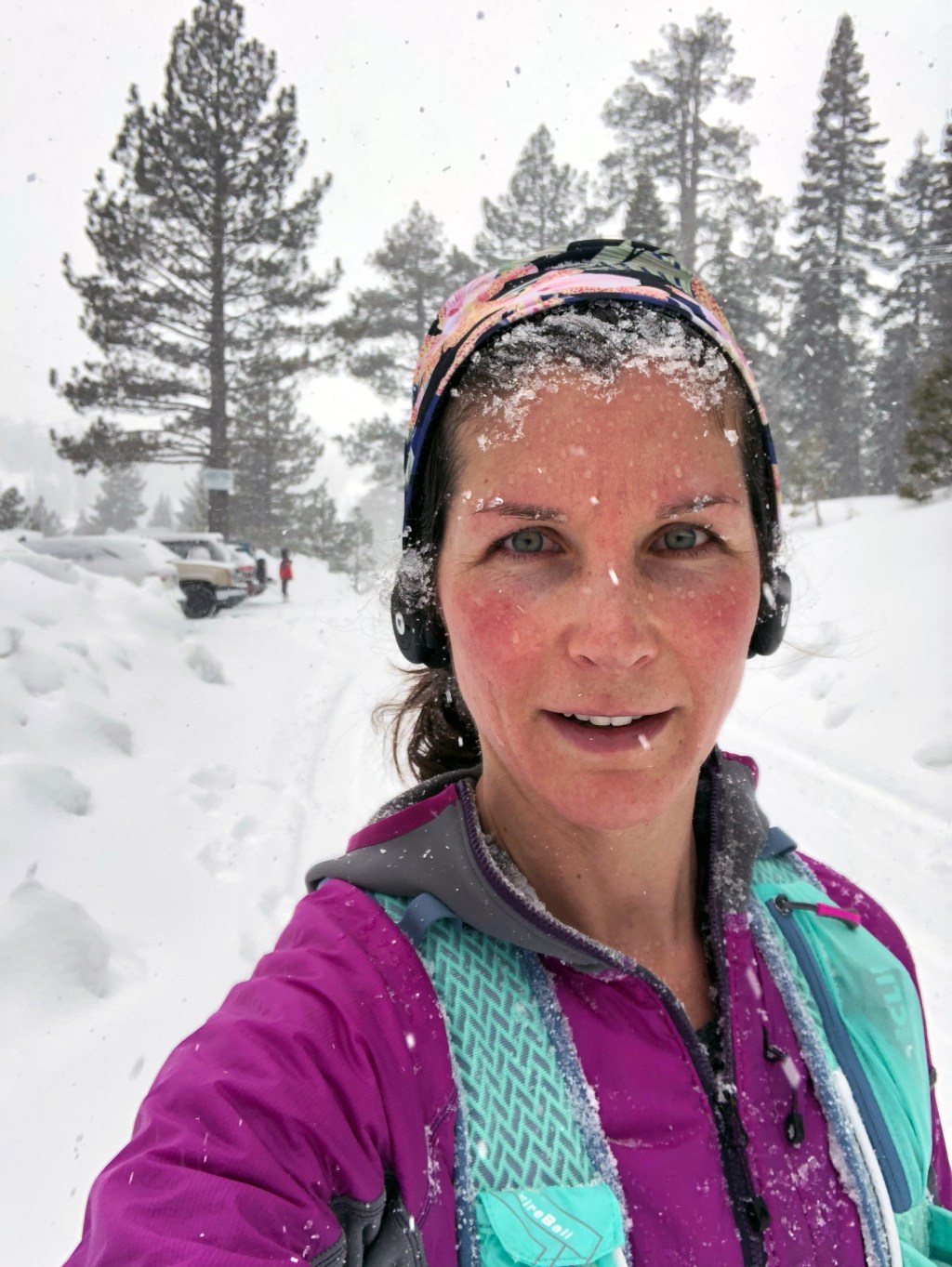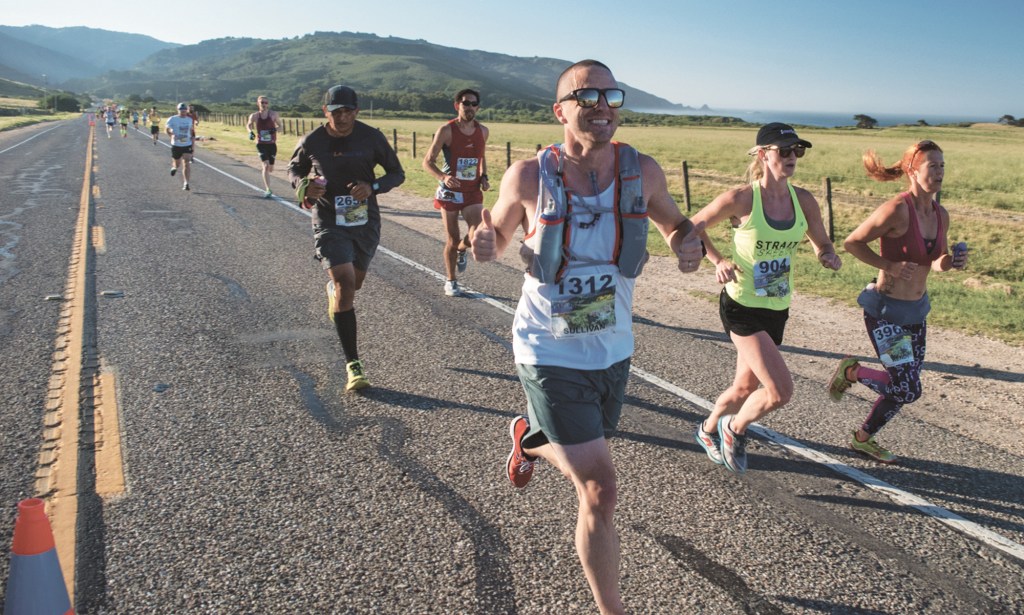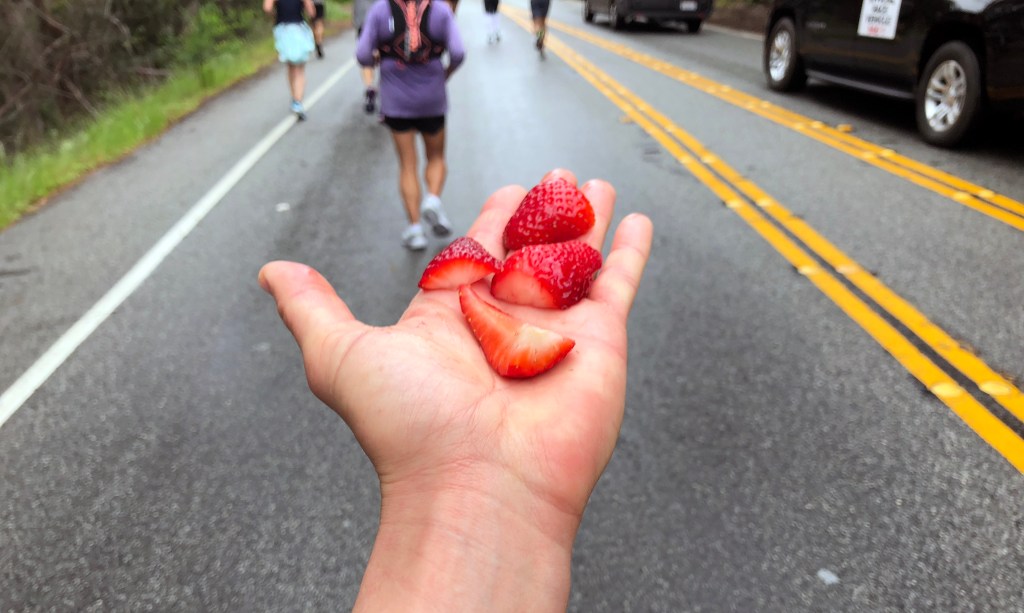It’s 6:30 in the morning and I’m staring down the 26.2 miles that lay ahead of me on a glorious, sunrise-lit stretch of Highway 1 from California’s Big Sur north toward Carmel. This moment, standing near the starting line before the race begins, is where I’m supposed to reflect and be grateful that I’ve made it this far. All the training, all those preparatory miles and early morning runs, are behind me now. But all I can think about is how far I still have to go.
The Big Sur Marathon—which took place on Sunday—is billed as the largest rural marathon in the world. More than 4,000 runners congregate along this remote stretch of rugged, rocky coastline three hours south of San Francisco on the literal edge of the Pacific Ocean. We’ll run through thick redwood forests, up and down seemingly endless hills and over the famed Bixby Bridge, where a grand piano will play classical tunes. It’s one of those must-do bucket list races for any runner. I ended up here not because I love long-distance running, but because I can’t say no when a good challenge finds its way into my inbox.
Hoka One One, the running shoe company, was bringing a few journalists together to test running shoes and enjoy the festivities around the Big Sur Marathon. When the email showed up, it was January—four months before the marathon—and in the midst of what was then a very dry winter in Tahoe City, California, where I live. With minimal snowfall and less-than-ideal ski conditions, I thought, sure, a spring weekend in Big Sur sounds like fun. Presented with the options of what distances I could run—5K, 12K, 11-miler, 21-miler, or the full 26.2—I didn’t hesitate. “I’ll do the marathon,” I responded.

The author during a less-than-ideal training run. (Photo Credit: Megan Michelson)
Fast forward to March and Tahoe is suddenly in the midst of one of the snowiest months on record. A whopping 18 feet of snow fell over the course of the month, making it the fourth wettest March since 1903 and earning the nickname “Miracle March.” So there I am, on a Saturday in mid-March when I’d much rather be skiing powder but instead I’m running 18 miles on wet, snowy roads as freezing snowflakes pelt me in the face.
I ran on slippery ice, through howling wind and froze my face and hands. I was really putting my new Hoka running shoes to the test—and they held up well. During one particularly stormy weekend in March, I was forced to stay inside and ran 14 brutally boring miles on a treadmill at the gym. Mental note: When you live in a ski town that’s prone to epic storms, do not sign up to train for a marathon in the middle of winter.
But now, I’m here, at the start of the run and it’s downright beautiful—a misty, morning fog shrouding the road ahead. Despite the blizzard-soaked training runs, I’m as physically ready as I’m going to be. Plus, Big Sur has bounced back from its own storm-battered past. In 2017, massive rainstorms and mudslides forced Highway 1 into Big Sur to close from the north for seven months, and the road headed south is still closed to traffic due to damage from landslides. For much of last year, if you wanted to visit Big Sur, you literally had to hike in. Last year’s marathon wasn’t impacted, since the slides were farther south than the course, but it still feels fitting that this place and I have both weathered the storms (albeit mine were far less severe).

Runners along Highway 1 in the Big Sur Marathon. (Photo courtesy of Big Sur Marathon Foundation)
Before the run, I’d asked Magda Boulet, a Hoka-sponsored runner who won the Big Sur Marathon in 2016 and now spends most of her time running ultramarathons, for some pointers. She’d devised the training plan I followed, too. It was a 16-week schedule with a mix of long runs, cross-training, rest days and interval workouts, where I’d run hard for two minutes, followed by a minute of easy jogging for between 30 and 45 minutes. “It’s important to mix up your training so you don’t overdo any one thing,” she’d said.
I’d asked her how she stays calm at the start of big races. “Big crowds in marathons can be tricky, for sure,” she’d said. “One thing I like to do is talk to people in the crowd. Most of them are excited and we’re all about to embark on this journey together and having a nice conversation with a total stranger about our shared hopes and fears can calm you down a bit.”
With that in mind, I struck up a conversation at the packed starting line with a mother-daughter duo—the mom was running her 12th marathon, while her daughter was running her first. They seemed both excited and anxious—just like me. Boulet was right. The quick chat helped—I didn’t know anyone here, but suddenly, I didn’t feel alone anymore.

You’ll run 26.2 miles but with gorgeous views of the Pacific Ocean. (Photo courtesy of Big Sur Marathon Foundation)
Finally, it was time to run. For the first half, I was so distracted by the gorgeous views—steep cliffs plunging into crashing waves to my left and towering old-growth trees and rolling, green hills to my right—that I barely noticed the miles falling away. Around mile 17, a determined drizzle appeared, soaking runners and water-pouring volunteers alike, but I thought, “I’ve run through worse.” Near mile 20, I began to feel the ache. A pinch between my shoulder blades, a heaviness in my step. It wasn’t the shoes—my Hoka Challenger ATR 4’s felt light, nimble and offered plenty of cushion—it was me.
I’d asked Boulet about this as well, since I’d only run up to 22 miles in my training: How will I tackle those last 4 miles, which feel like uncharted territory? “I find that the adrenaline and energy you feel on race day will make the earlier miles a bit easier than they were in training and the excitement of finishing should help carry you through those last few miles,” Boulet said. “If it does really start to hurt, though, a lot of people slow way down. What I’ve found is it still hurts just as much, so you might as well try to keep the pace you were running and get done sooner.”

Strawberries help on the final push to the finish. (Photo credit: Megan Michelson)
I channeled her advice and tried to maintain my pace as best I could. Might as well minimize the time spent suffering, right? Then, just when I thought I couldn’t go any farther, I came upon the strawberries. Just past mile 23, 3 miles from the finish, volunteers stood on the side of the road handing out fistfuls of fresh, glistening berries. I shoved a few into my mouth, gulped down some water and ran toward the finish.
When I crossed that finish line, I was shivering from the dampness and every muscle in my body was screaming to lie down, but I couldn’t have been happier. I felt impossibly strong and empowered in a way I can’t fully describe, like a jolt of electricity was pumping through me. I may not sign up for another marathon requiring winter training again, but a summer marathon? Absolutely.
